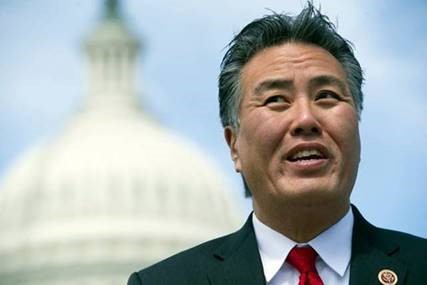Mammoth Toxic Exposure Push Could Be Biggest Congressional Health Care Effort in Years

5 May 2021
Military.com | By Steve Beynon
Rep. Mark Takano, D-Calif., is aiming for a seismic move to open up care and disability to a half-century worth of veterans sickened by toxic exposure, in what could be one of the largest health care efforts on Capitol Hill in years.
“We cannot continue to tackle this topic one disability at a time,” Takano, chairman of the House Veterans Affairs Committee, said at a hearing on the matter Wednesday. “2021 should be the year, and will be the year, we pass comprehensive legislation that meets the needs of all veterans, current and future, who are exposed to toxic substances while serving our country.”
The House is looking at 15 bills, ranging from incremental improvements to help veterans navigate bureaucracy at the Department of Veterans Affairs to expanding health care to those exposed to burn pits, Agent Orange, radiation and other toxic environments. Takano said the bills “offer a blueprint” for a legislative package.
The big-ticket items include presumptive care for the estimated 3.5 million veterans exposed to burn pits since 1990, which has been dubbed by some as the post-9/11 generation’s Agent Orange. Currently, veterans must provide a clear link between exposure and their medical conditions, which can be nearly impossible.
Takano’s announcement comes a week after Sen. Jon Tester, D-Mont., said he is building an omnibus bill on toxic exposure, aiming for a markup by Memorial Day and a floor vote later this year. Tester chairs the Senate Veterans Affairs Committee.
The efforts in both chambers have a long way to go before becoming law. Multiple advocates and congressional staffers interviewed are cautiously optimistic, and all agreed that, given the momentum, this is the year to be aggressive and try to pass a big health care bill that grants presumptive care to vets sickened by burn pits.
They don’t foresee a lot of speed bumps, or lawmakers publicly going against an omnibus bill. However, the cost is expected to be enormous, which could give some lawmakers sticker shock. Even so, many argue that cost would simply be the government paying its tab for war.
“The iron is hot, and now is the time to strike. We’re in a good spot right now,” Travis Horr, director of government affairs for Iraq and Afghanistan Veterans of America, told Military.com. “We’re seeing this is the year for presumptive care. … I think there could be some concern with cost, but this is included in the cost of war. No one was asking for a price tag when we went into Iraq and Afghanistan.”
It’s unclear how many veterans are sick from burn pits or have died from related illnesses. VA data shows 72% of the 15,640 burn pit-related claims since 2007 were denied. However, the data is murky at best. The agency largely got it from a word search for phrases like “burn pits” in its patient database. That means if a veteran’s medical record never specifically referenced burn pits, it’s unlikely to be represented in the data.
Meanwhile, out of the 2.5 million Global War on Terrorism veterans, 781,384 have filed claims related to respiratory issues. According to VA data obtained by Military.com, 63% were granted. Of all the GWOT veterans, 42,686 filed for claims related to cancer; 37% of those claims were granted.
The VA’s research shows GWOT veterans are three times more likely than non-deployed veterans to file claims related to respiratory issues and twice as likely to file claims for cancer.
— Steve Beynon can be reached at Steve.Beynon@military.com. Follow him on Twitter @StevenBeynon.
